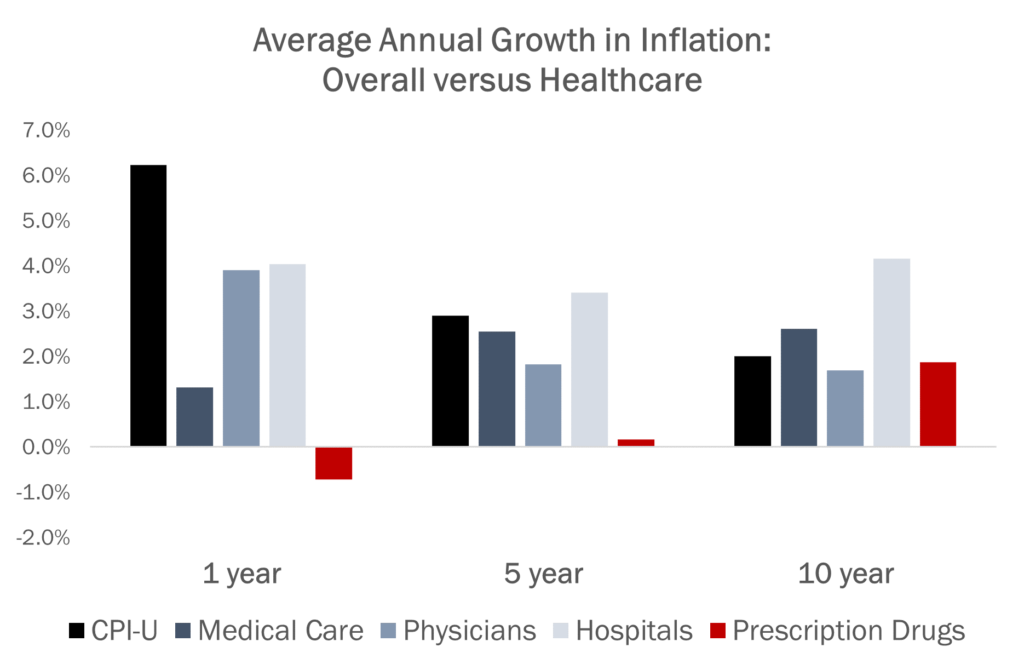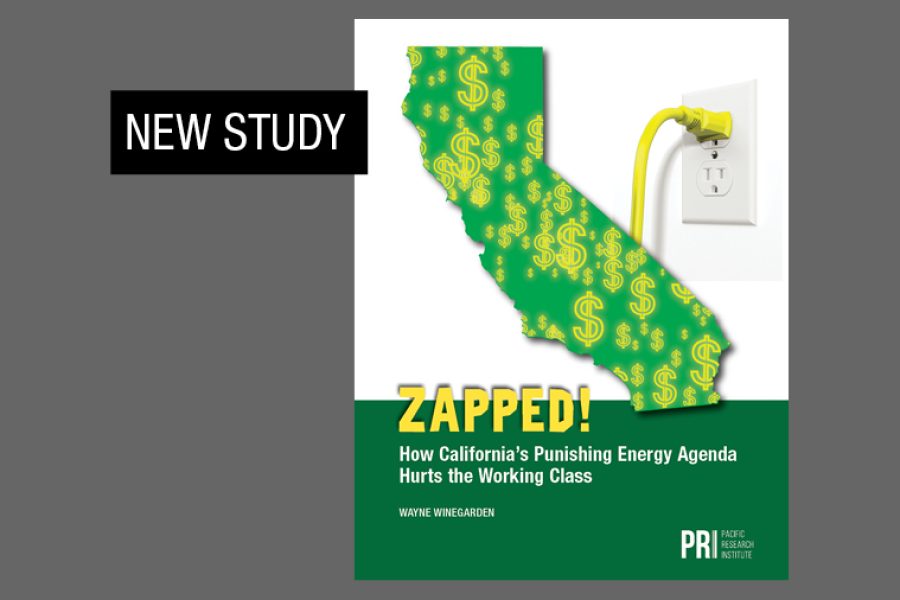Inflation is worrying Americans, and for good reason. The latest inflation report, the Consumer Price Index (CPI) released on November 10th, showed that prices were 6.2 percent higher in October 2021 compared to October 2020. More troubling, this was the fifth month in a row where the annual growth in CPI inflation exceeded five percent.
Digging deeper into the CPI data provides important perspective on another pressing issue – the growth in drug prices. While fluid, the so-called Build Back Better legislation would effectively impose price controls on generics, biosimilars, and innovative medicines under the guise of “allowing Medicare to negotiate drug prices.” Of course, when the government can expropriate 95 percent of your revenues if you do not accept their terms, it is disingenuous to call this process a negotiation.
More troubling, drug price controls are not a solution to the problem, which is where the inflation data come in. The figure below presents the overall rate of inflation (CPI-U) as well as the inflation rates for overall medical care, physicians services, hospitals, and prescription drugs. The average annual growth in inflation is presented over the past year (between October 2020 and October 2021), past five years, and past ten years.

Source: BLS
The figure demonstrates that over the past year while overall prices rose 6.2 percent, the prices for prescription drugs declined 0.7 percent. More importantly, the average annual growth in the prices for prescription drugs has been less than overall inflation for the past 5 years and the past 10 years. Put differently, relative to all other prices, the prices of prescription drugs as measured by the CPI have become more affordable not less.
This result is counterintuitive, of course, and inconsistent with the rhetoric coming out of Washington D.C.
An important explanation for the disconnect is the drug supply chain. Even though the net price of medicines has been declining, the complicated drug supply chain has been shifting more of the costs onto patients through higher out of pocket expenditures. Therefore, many patients are spending more on their medicines even though the relevant net prices for their prescriptions have been declining.
The recent inflation trends demonstrate that drug price controls are the wrong solution to the wrong problem. Rising drug prices are not the problem; an unwarranted shifting of costs on to consumers is. Controlling consumer out of pocket expenditures requires reforms to the current drug supply chain, particularly addressing the problems created by the gross-to-net bubble.
The just released CPI report is a clear warning signal to policymakers. Implementing drug price controls is folly because drug affordability is a problem created by inefficient market incentives, not rising prices for prescription drugs. Consequently, the problem of drug affordability will not be solved by implementing the anti-growth drug price controls contained in the Build Back Better program.
Unfortunately, this problem plagues the entire social spending package currently moving in the U.S. House of Representatives. The new spending programs will fail to achieve their lofty goals, while the anti-growth policies will diminish the economy’s long-run growth potential and fuel future inflationary pressures. Should Congress implement these policies regardless of the consequences, they cannot claim that they were not warned.
Wayne Winegarden, Ph.D. is a Sr. Fellow in Business and Economics and Director of the Center for Medical Economics and Innovation at the Pacific Research Institute.


